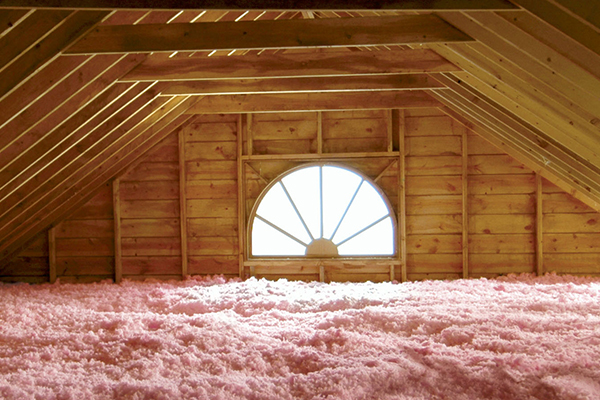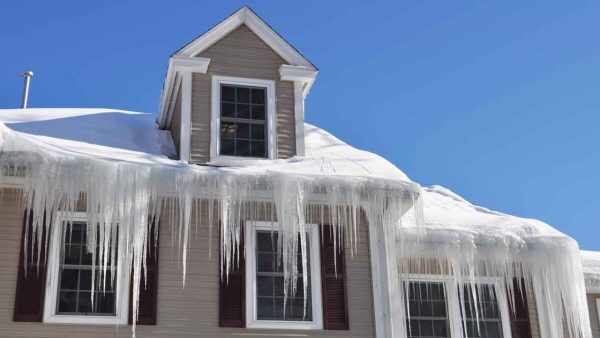With the colder months here, many Canadians are looking for ways to stay warm while saving money on the rising cost of heating their homes. It's also the time of year when you're going to want to take precautions from mother nature's frozen wrath.
Winter can inflict real damage to areas of your home. Below are some tips to help you protect your property throughout the upcoming season.
1. Insulate & Seal Up Your Home
The main goal of sealing up and insulating your home is pretty straightforward: to keep the warm air in and the cold air out! In the average home, if you added up all the cracks and gaps in the average home, the area would be more than you would ever think possible! Just imagine the amount of cold air that can come in through those spaces and the amount of warm air that can leak out.
The following areas in your home are where the biggest heat losses occur:
Attic Insulation: Since warm air rises, if you don’t have enough attic insulation, your heating bills are literally going through the roof. One of the most common and effective ways to save heat is by making sure you have enough insulation. If you’re not sure, go in your attic and see if the ceiling joists are visible. If they are, you need more. Insulation is rated based on a measurement of resistance the material has to the movement of heat; this rating is most commonly referred to as an R-value. The higher the R-value, the more effective the insulation is. Local building codes list recommended R-values for each area of your house (these R-values are required for new construction). Improper installation of insulation can lower the R-value of the material you are using, so it’s a good idea to follow the manufacturer’s instructions or hire a professional to do the installation.
Sealing Up Cracks: Cracks around windows, on perimeter walls and at electrical outlets that are located on an exterior wall can create a big loss of warm air. Caulk any gaps and seal up cracks and holes to provide a more airtight envelope around your home. Also, check your weather stripping and replace or adjust any that is worn or doesn’t fit tightly.
Inefficient Windows: While this is a time of year that many homeowners choose to replace old windows that rattle and allow the wind to blow right through, purchasing new insulated glass windows is an expensive project and requires some planning for many. A short-term fix is to install window insulation kits that contain plastic sheeting that cover the window. They are very easy to install, can completely insulate the window, at a cost of only $5-$10 per window.
2. Getting the Most of Your Heating System
Now that you have insulated your home, the next step is to make sure you are getting the best possible performance from your current heating system. One of the first steps is to have your heating system serviced by a professional to ensure it is operating at its maximum efficiency. It is also a good idea to change your air filter at least once a month.
Another way to maximize on your current heating system and save money on heating bills is to replace your existing thermostat with a computerized setback or progammable thermostat. By setting it to fit your daily routine, you can be sure that your home is warm when you want it to be, and not when you are away from home.
3. Protect Your Pipes from Freezing
You might not realize it, but the pipes in and around your house need to be protected from the cold as well. To keep your pipes from freezing, you can:
- Insulate: Insulate hot and cold water pipes in the crawlspace under your house as well as in the basement, attic, and exterior walls (if accessible) with snap-on foam insulation. Make sure foam insulation fits tightly without gaps. Apply duct tape to joints in the insulation, and miter foam around elbows so the joints in pipes are completely covered.
- Sprinkler System: If you have a sprinkler system, turn it off and blow compressed air through the irrigation lines to drain the water.
- Cabinets: Open cabinet doors under sinks in the kitchen and bath - if the cabinets are located on exterior walls - to allow inside heat to pipes.
- Garage: Keep garage door closed during extreme cold weather.
- Foundation: For houses that have a crawlspace, make sure the foundation is completely enclosed, and fill any gaps in foundation walls with caulking or expanding foam. Close or cover the foundation vents under house during extreme cold weather.
- Basement: Close and weather strip exterior basement windows and doors.
- Garden Hose: Disconnect and drain garden hoses.
- Exterior Faucets: To protect the exterior faucet(s) around your foundation, either cover faucets with insulated foam covers, cut off water to exterior faucets and open faucets to drain pipes - or install exterior faucets that cut water supply off inside foundation walls.
4. Prevent Ice Dams on Your Home
It's a site that's all too common for Canadians every winter: glistening, crystal-clear icicles hanging from gutters and eaves. While they may look beautiful, the problem is they're destructive.
How Ice Damns Form: Ice dams form when a roof is blanketed with snow. The snow layer that is sitting directly on the roof begins to melt, and water runs down the roof underneath the snow. When the water hits the overhanging eave of the house, it begins to freeze. Some water often drains into the gutter, where it freezes as well. As the snow continues to melt and water freezes at the eave, ice eventually builds up along the roof forming a dam. Then, as water runs down the roof, it’s blocked by the ice dam, and is forced up under the shingles.
This is where the trouble really begins, since roofs are designed to shed water running down the shingles, not up. Over time, the water will work its way beneath the shingles and the underlayment and into the seams between the plywood roof sheathing. From there, water drips directly into the attic, where it soaks through the insulation and ceiling, before dripping into the room below. If not detected, the damage can be very difficult and expensive to repair, especially if it ends up ruining the floor, walls, and/or furnishings.
Because the entire process of ice damming begins when snow sitting on the roof begins to melt, the key is you want the interior attic temperature to be as close as possible to the outside air temperature. That’s why there’s only insulation on the attic floor, not between the roof rafters. However, if the attic floor isn’t properly insulated - or if heated air is leaking through the ceiling, via cracks, crevices, ductwork and light fixtures - then the attic will become warm. And it doesn’t take very much heat to raise the attic temperature enough to melt the snow on the roof. Since the overhanging eave extends past the house, it remains cold, which is why the water freezes when it hits the eave.
How To Prevent Ice Dams:
- Seal Air Leaks: Use caulk, insulation and weatherstripping to seal all upstairs ceilings to stop heat from flowing into the attic.
- Attic Ventilation & Insulation: Measure the depth of the insulation on the attic floor, and add more if necessary. Also ensure the attic ventilation system is operating properly. Most homes have soffit vents and ridge or gable-end vents, which allow air to flow into the attic along the eaves and out the attic at the ridgeline or gable walls. Be certain the attic-floor insulation isn’t blocking the soffit vents. And never staple plastic or anything else over attic vents. Remember, you want attic temperature to be as close as possible to the outside air temperature.
- Clean Your Gutters: In the late fall, it's a good idea to make sure your gutters are free of debris and leaves which will prohibit drainage and create back-ups.
If your home already has ice dams, there’s not too much you can do about them. Avoid installing electric cables or any other device to melt the ice, as they won’t solve the problem. You can try using a snow rake to remove as much snow as possible from the roof. That’ll at least remove the source of water. Just be sure to work safely from the ground, since it’s never a good idea to climb onto a snow-covered roof.
I hope these tips come in handy as we greet Old Man Winter!
Thanks for taking the time to read The Home Blog.
If you have any questions about winterizing your property or real estate in general, please contact (416) 577-8011.
If you wish to receive my monthly newsletter "AROUND THE HOUSE " - which delivers targeted insight to trends in the marketplace, please drop me a line at info@adrianoaldini.com.








Post a comment